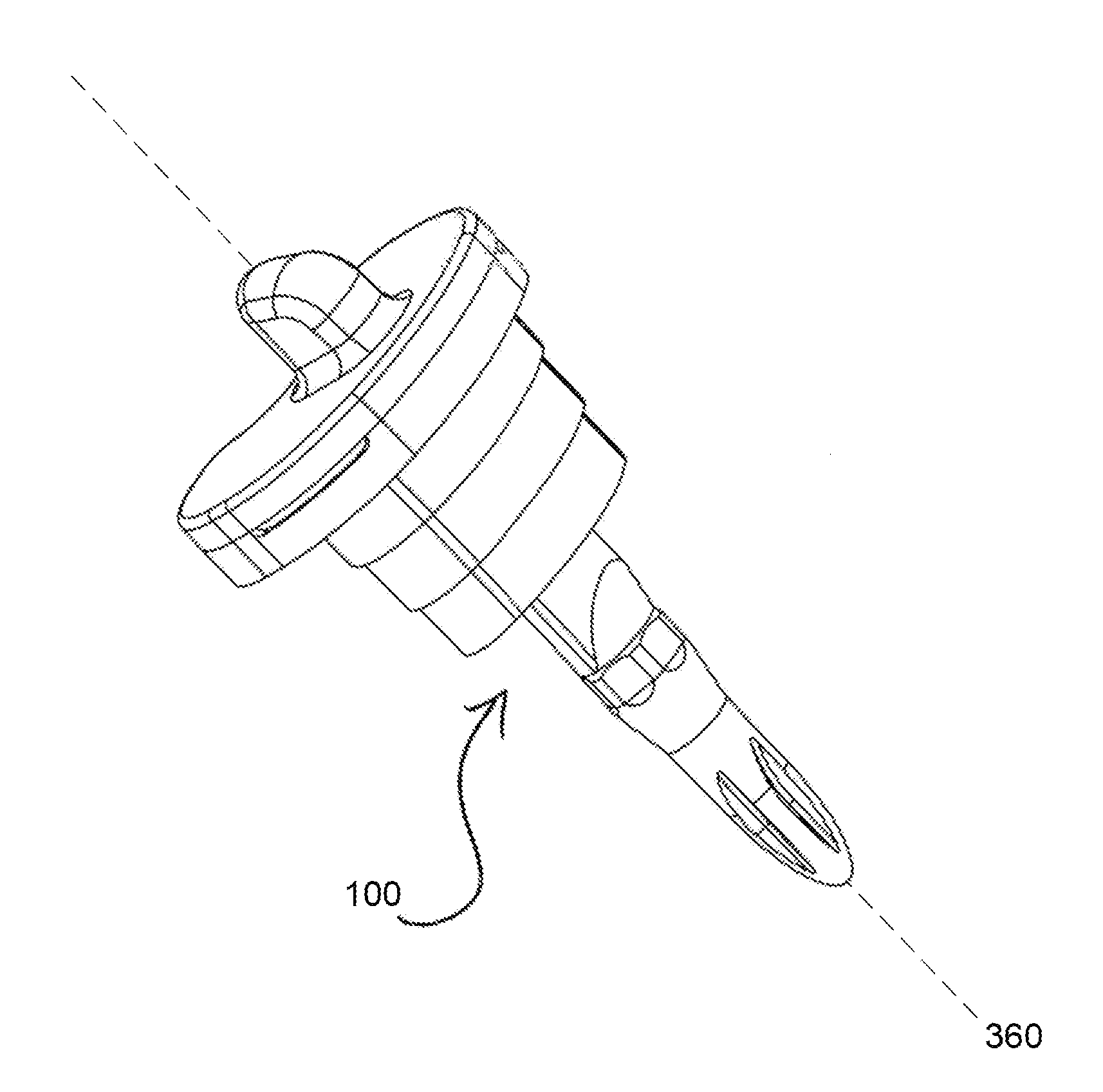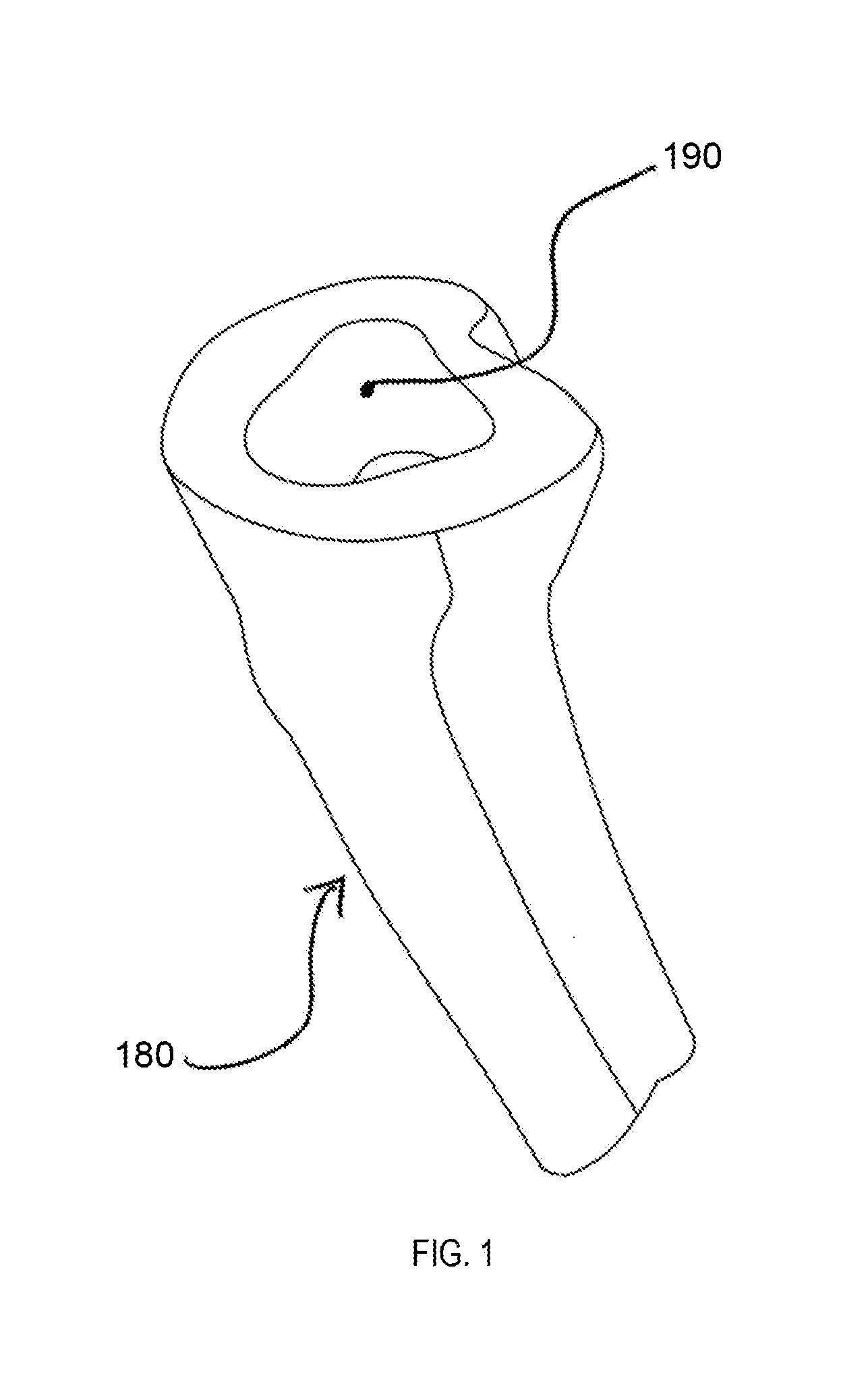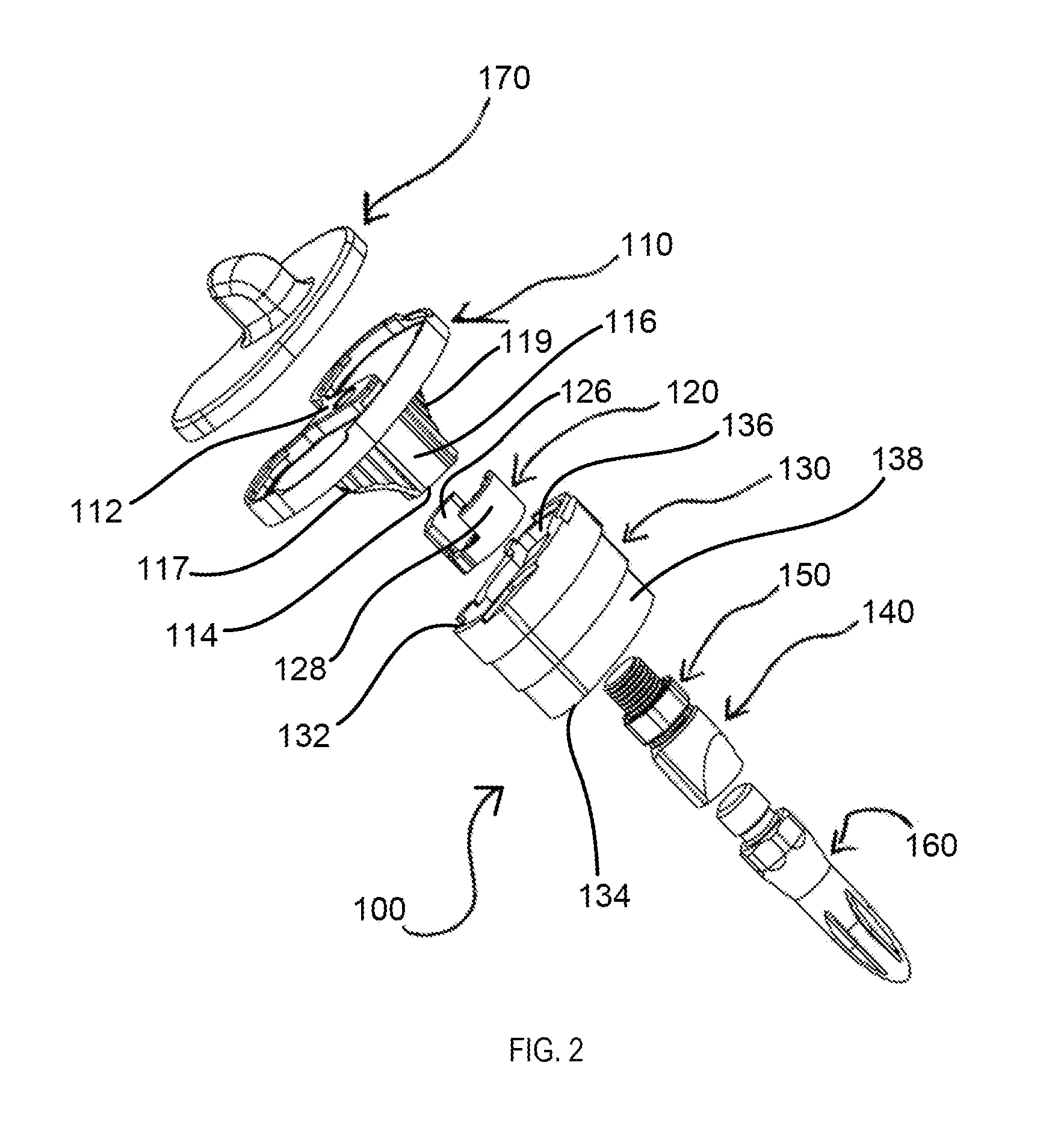Prosthetic knee void filers with splined fixation
a joint replacement and void technology, applied in the field of joint replacement systems, can solve the problems of often necessary revision procedures, loss of native bone near the joint being replaced, defects in bone adjacent to the joint, etc., and achieve the effects of fine rotational adjustment, small difference in angular spacing, and improved anatomical fi
- Summary
- Abstract
- Description
- Claims
- Application Information
AI Technical Summary
Benefits of technology
Problems solved by technology
Method used
Image
Examples
Embodiment Construction
[0057]As used herein, when referring to the drill guides of the present invention, the term “proximal” means closer to the surgeon or in a direction toward the surgeon and the term “distal” means more distant from the surgeon or in a direction away from the surgeon. The term “anterior” means towards the front part of the body or the face and the term “posterior” means towards the back of the body. The term “medial” means toward the midline of the body and the term “lateral” means away from the midline of the body.
[0058]FIG. 1 shows a bone 180 having a canal 190. Bone 180 may be any type of bone, but as shown it represents a tibia of a patient. Canal 190 can be formed through a reaming procedure or may be present due to a previous joint replacement procedure in which a tibial prosthesis was implanted in canal 190 and has now been removed leaving a void in bone 180. Canal 190 can also be present because of bone degeneration such as osteoporosis. The present invention includes systems ...
PUM
 Login to View More
Login to View More Abstract
Description
Claims
Application Information
 Login to View More
Login to View More - R&D
- Intellectual Property
- Life Sciences
- Materials
- Tech Scout
- Unparalleled Data Quality
- Higher Quality Content
- 60% Fewer Hallucinations
Browse by: Latest US Patents, China's latest patents, Technical Efficacy Thesaurus, Application Domain, Technology Topic, Popular Technical Reports.
© 2025 PatSnap. All rights reserved.Legal|Privacy policy|Modern Slavery Act Transparency Statement|Sitemap|About US| Contact US: help@patsnap.com



